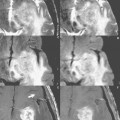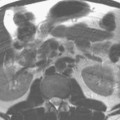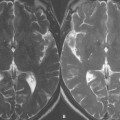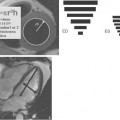82 Filtering Images (to Reduce Artifacts)
A variety of filters are available for use on most MR scanners to improve the appearance of images and minimize artifacts. Although the specific characteristics of each filter vary from vendor to vendor, there are inherent similarities. Filters can be k-space-based (raw data filtering) or image-based (image data filtering). Described below are several examples of filters designed to reduce artifacts associated with image acquisition and hardware limitations.
The first filter addresses artifacts associated with an incomplete digitization or truncation of the MR echo (see Case 104). This artifact, known as Gibbs’ ringing or simply truncation artifact, is visible as additional lines or ringing near the sharp changes in intensity at the edge of a volume of tissue or at an interface (e.g., air-skull, cord-CSF). Truncation artifacts arise due to the discrete sampling of the signal (the abrupt starting and stopping). This type of artifact is more conspicuous in lower-resolution images, specifically along an axis with a large pixel dimension, and for that reason also often along the phase-encoding direction. Filtering in k space for Gibbs’ ringing is done using a bell-shaped filter such as a Hanning or Gaussian filter. The result is a dampening of the signal toward the edges of k space creating a smooth (nontruncated) transition.
The second example of a filter (for illustrations and further detail, see Case 84
Stay updated, free articles. Join our Telegram channel

Full access? Get Clinical Tree








